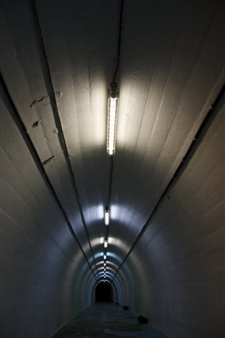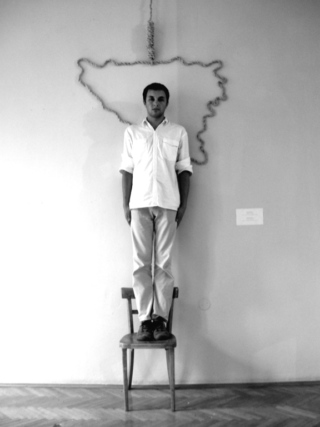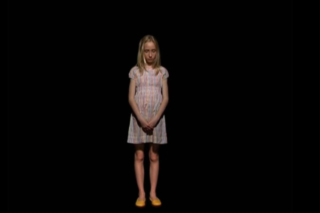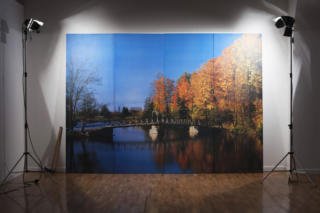"No Network" - 1st TIME MACHINE Biennial of Contemporary Art

Biennale of Contemporary Art, Sarajevo, Federation of Bosnia and Herzegovina, Sarajevo, 05/27/2011 - 10/27/2011
Ferhadija 13
The Atomic War Command in the Bosnian town of Konjic was one of the largest underground facilities ever built in Socialist Federal Republic of Yugoslavia and one of the most massive construction projects in its history. Dedicated to sheltering the Yugoslav Army headquarters along with 350 chosen ones in the event of nuclear war, this space was built over a period of almost three decades (from 1950s to 1970s) and cost billions of dollars. Today the ARK has all the characteristics of a failed Cold War investment. The nuclear catastrophe it was meant to survive never occurred, and the state which had systematically worked to defend itself in case of such a disaster, fell apart in a conventional war fought with far less technologically advanced means.
The historical lesson is unambiguous. Nonetheless, it should not be approached with cold cynicism as a symbol of a failed political project. Today the bunker in Konjic is gradually becoming a time machine that inspires us to travel into the past as much as into the future. This journey may be initiated and mediated by innovative practices of contemporary art, in the form of critical inquiries into the implications and consequences of this unique place, and its historical tale.
The ARK can be stirred, analysed and actualized through various artistic interventions by creating different nodes of ambiguous meanings where space and time meet, both physically and politically. The bunker was a place that could provideshelter and sustenance for a limited number of people during a brief period of time in a potential catastrophe. The exhibition could therefore become a “simulation of life” in the restricted circumstances, in the sense of pure “survival”, with all its accompanying political and psychological (personal/intimate) experiences and insights. While the invited artists are asked to base their work contextually, they are also asked to freely broaden this context to include contemporaryimplications that can trigger the relevant questions that we pose ourselves about the future of the entire planet.In the field of contemporary culture and media, the issues raised by this location and this project are reflected in the dominant “pre-apocalyptic” mood: climate change, environmental pollution, rapid depletion of natural energy resources, dispersion of the nuclear arsenal (with the possibility that not only states but also powerful individuals may possess the capacity to develop and launch such weapons), drastic increase in population with resultant poverty, an expanding “third world” in a global “post-industrial” economic and political system, aggressive privatization of public assets including “universal knowledge” itself, repressive political dictatorships and growing religious fanaticisms announcing the upcoming “end of the world”, etc...
The first edition of the Biennial will be realized under the title NO NETWORK. The title came out of a simple observation: the bunker is a secluded and isolated space which prevents us from using contemporary means of individual communication, such as mobile phones, which inform us that there is “no network connection” available there. In such physical and psychological isolation, this space becomes a space of anxious reflection rather than a space of unhindered communication. This does not imply that an exhibition as such is not essentially a form of communication between the artists, their works and the space itself: the works will not “compete” with the space but initiate and keep a conversation with it. But, by emphasizing the ability of art to generate knowledge end emotions that mutually reflect each other, we would like to re-think the omnipresence of the rhetoric of “networking” as very often devoid of concentrated subjective solitude from which the artistic endeavour transpires. The artists invited to participate in the project are primarily those whose work is concerned with different aspects of “artistic research” and other “non-disciplinary” modes of inter-subjective production in the field of contemporary experience, which is otherwise increasingly being emptied of forms of reflexive communication in a “common language”.


